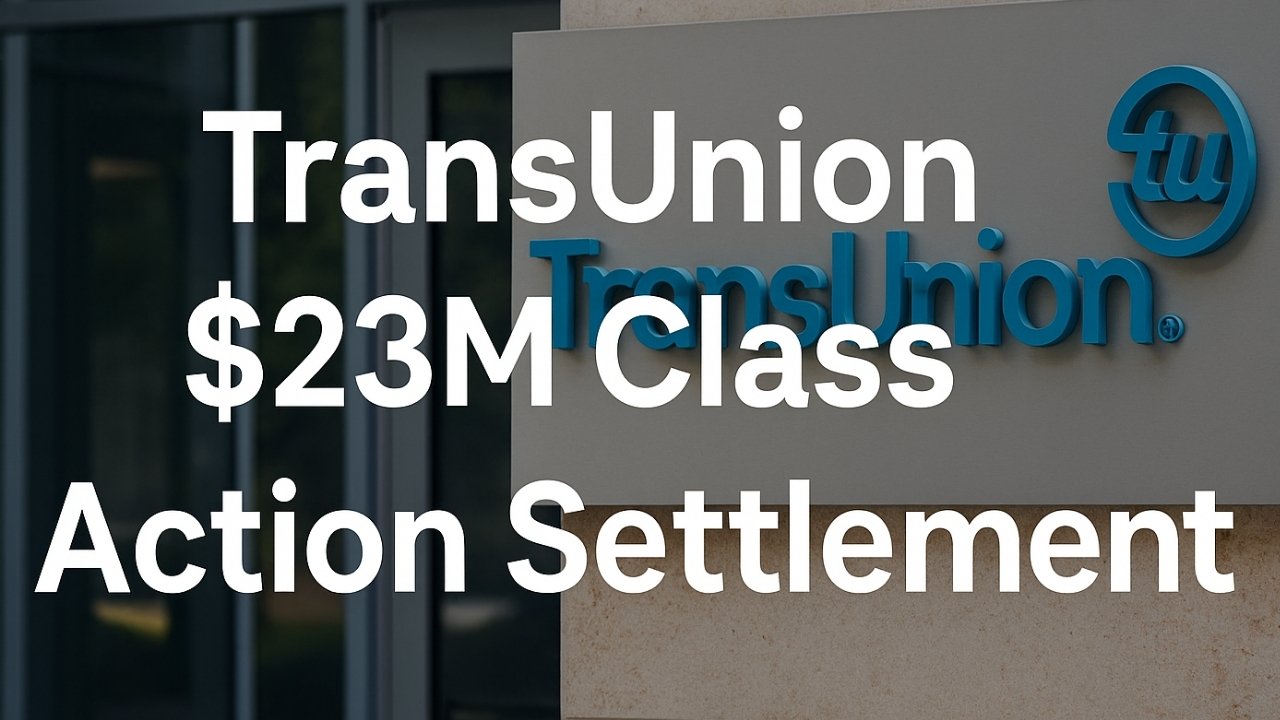In a major development affecting hundreds of thousands of U.S. consumers, TransUnion — one of the largest credit reporting agencies in the country — has agreed to a $23 million settlement in response to allegations that it mishandled credit report disputes. The class action lawsuit claimed that TransUnion failed to conduct proper investigations when consumers disputed certain “hard inquiries” on their credit reports. Instead of performing a reinvestigation as required under the Fair Credit Reporting Act (FCRA), TransUnion allegedly responded with automated form letters, known as “502 Letters.”
This practice, according to plaintiffs, violated the legal rights of consumers by ignoring their individual disputes and failing to verify whether the credit inquiries were legitimate. The letters in question were issued to consumers who had submitted written disputes between December 5, 2016, and January 31, 2025. The scope of the settlement is wide, with nearly 485,000 individuals identified as potential class members.
While TransUnion continues to deny any wrongdoing, it has opted for a financial settlement to avoid prolonged litigation and to provide monetary relief to the affected individuals. The agreement includes both automatic payments and additional compensation for consumers who experienced significant harm due to the mishandling of their disputes.
TransUnion Settles $23M Lawsuit

To be eligible for benefits under this class action settlement, individuals must fall within the following criteria:
- They received a “502 Letter” from TransUnion in response to a written dispute of a credit inquiry.
- The letter was issued during the period from December 5, 2016, through January 31, 2025.
TransUnion has compiled a list of affected individuals based on internal records and will provide notifications to qualifying class members. The settlement does not require any action for basic compensation. However, those who have suffered actual damages due to the failure to remove unauthorized or disputed inquiries must submit a valid claim with supporting documents.
Breakdown of the Settlement Payment Structure
The $23 million fund will be distributed among class members in two major tiers. Here’s a snapshot of how compensation is structured:
| Tier Type | Payment Range | Claim Requirement | Intended For |
|---|---|---|---|
| Tier 1 | $20 – $30 | No claim required | All class members receiving 502 Letters |
| Tier 2 | Up to $160 | Claim form required | Members with proof of denial or financial impact |
Each eligible class member under Tier 1 will receive a flat payment. Those claiming Tier 2 benefits must show how the hard inquiry dispute led to tangible harm — such as being denied a loan or facing increased interest rates.
Core Allegations Against TransUnion
The class action lawsuit raised serious allegations regarding the company’s internal procedures in responding to consumer credit disputes. Here are the key failings cited in the complaint:
- Failure to Investigate Disputes Properly: Instead of initiating a reinvestigation upon receiving a dispute, TransUnion allegedly generated generic responses via the “502 Letter.”
- Lack of Contact with Creditor Companies: Plaintiffs claimed that TransUnion did not reach out to the creditors or entities that had initiated the disputed hard inquiries, violating FCRA protocols.
- Failure to Remove Unauthorized Inquiries: Even after receiving consumer complaints, TransUnion allegedly left the inaccurate hard inquiries on reports, thereby damaging credit scores.
- Automated Response Mechanism: The use of template letters reportedly reflected a system that lacked individual analysis and failed to protect consumer rights.
These alleged missteps not only undermined consumer trust but may have also had measurable consequences on access to housing, loans, jobs, and insurance.
Important Deadlines and Legal Milestones
To ensure class members are informed and take timely action, the following dates are of critical importance:
| Event | Deadline / Date |
|---|---|
| Claim Form Submission (Tier 2) | June 24, 2025 |
| Opt-Out or Objection Deadline | June 24, 2025 |
| Final Settlement Hearing | July 21, 2025 |
Claimants who miss these deadlines may either lose their right to higher compensation or the ability to object to the settlement.
What Should Class Members Do Now?
For affected consumers, navigating the settlement process can be straightforward if steps are followed carefully. Here’s a recommended plan of action:
- Check for 502 Letter: Locate any past communications from TransUnion received between 2016 and 2025.
- Await Official Notice: Eligible individuals will receive automatic notices.
- Decide on Tier: Choose between accepting automatic payment or submitting a claim for enhanced payout.
- Gather Evidence: If claiming Tier 2 benefits, collect bank rejections, denial letters, or financial records.
- Submit Claim by Deadline: Ensure that your claim is submitted no later than June 24, 2025.
- Monitor Final Approval: Follow updates on the final approval hearing set for July 21, 2025.
Common Scenarios That Qualify for Higher Compensation
To assist consumers in determining whether they may be eligible for higher payout amounts, here are a few examples of qualifying harm:
- A mortgage or loan application denied due to disputed hard inquiry
- A rejected job application where the employer conducted a credit check
- Being charged a higher interest rate due to inaccurate inquiry data
- Reputational damage or credit monitoring fees incurred to correct errors
Providing documentation for these issues could significantly increase a class member’s settlement payout under Tier 2.
A Settlement with Lasting Implications
This $23 million settlement not only delivers financial relief to nearly half a million Americans but also reaffirms the legal responsibilities of credit reporting agencies. The lawsuit highlights how automated, impersonal responses to sensitive credit disputes can cause real harm, especially when individuals are unaware of incorrect entries impacting their credit scores.
For consumers, this case reinforces the importance of regularly checking credit reports and exercising their rights under the FCRA. For credit agencies, it serves as a reminder that accountability and consumer trust must be central to their operations.